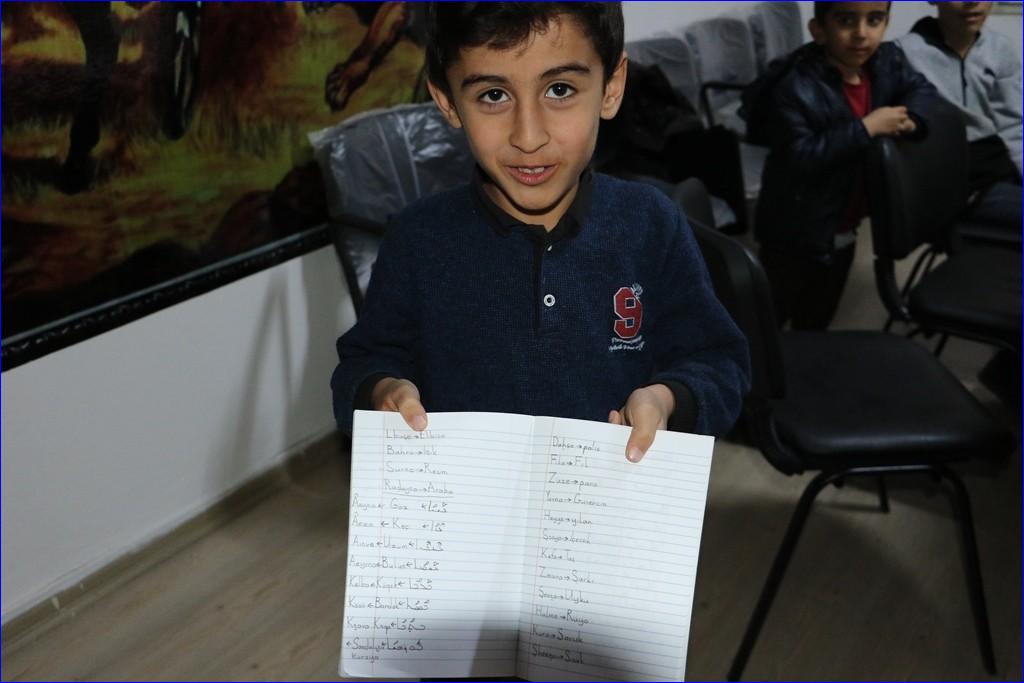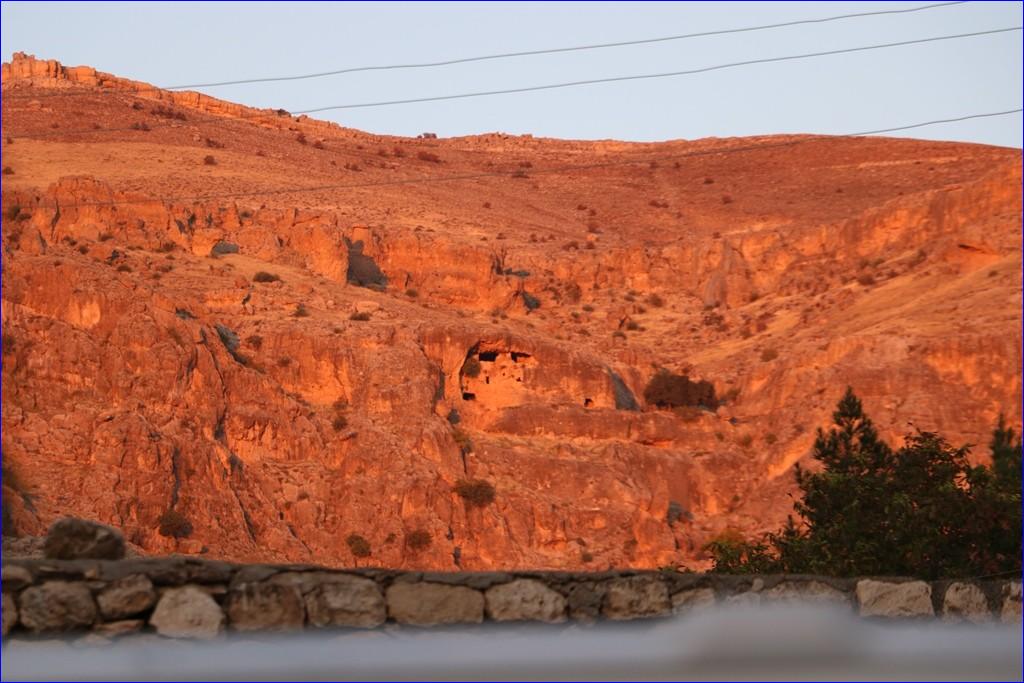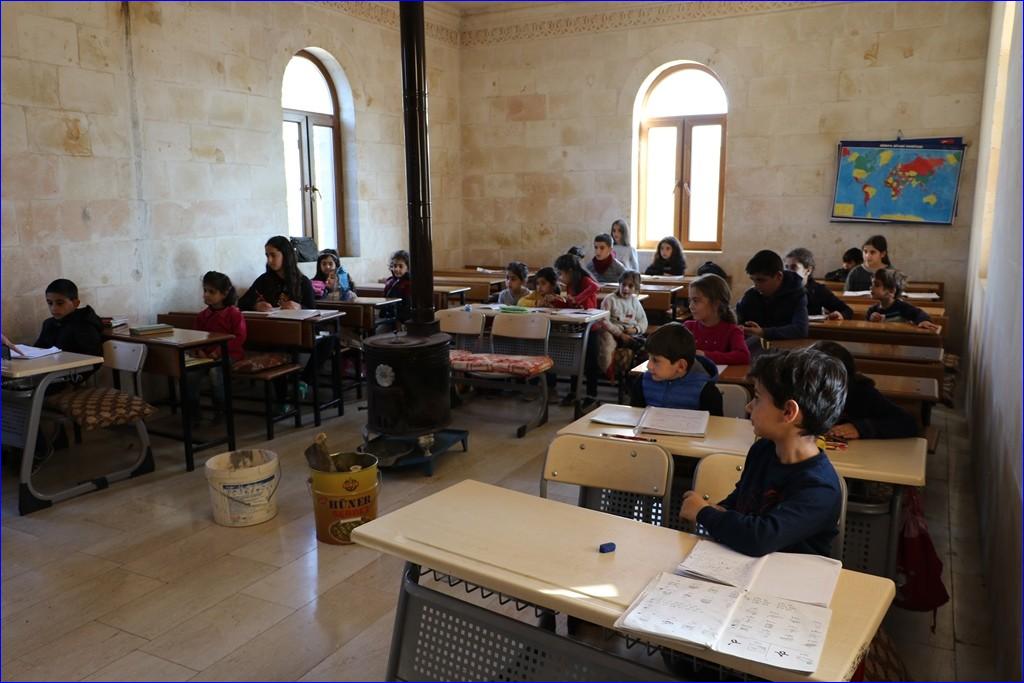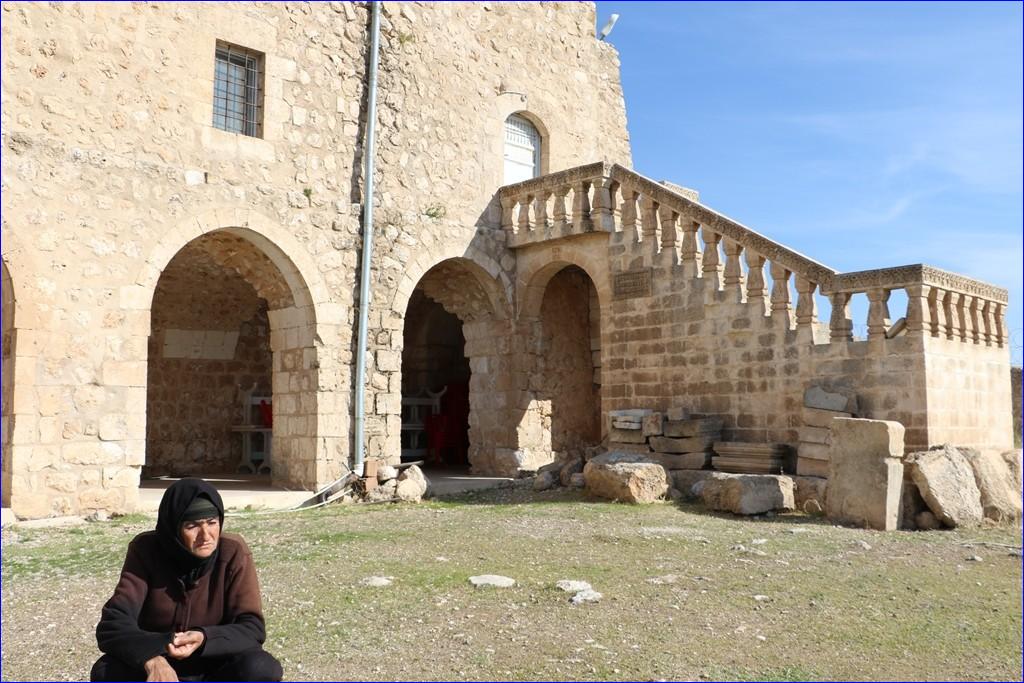


 Athra Kado)
Athra Kado)
I was welcomed by my friends Eliyo Eliyo, an archeologist, Adem Cosken, a Syriac language teacher in Mardin University, and his brother Sharo. They all speak a western-dialect of the Syriac language, which any eastern-dialect speaker can understand with some concentration or word comparison.
Many of the TurAbdin-area families returned from Europe to rebuild and renovate their homes. They have also reclaimed many areas, properties and villages from the government after being forced to abandon them in the 1980s and 1990s due to Kurdish and Turkish clashes. The inhabitants fled over safety concerns and were forced to leave or were killed if they refused to welcome the fighters. The situation is currently more stable as the Turkish army increased control.
My trip began in the village of Anhil. Together with Eliyo, Adem and Sharo, we met a couple who were cleaning pistachios and offered us some of their local natural products to eat.
We then travelled to the Arkah village, passing by Kafro Tahtayto (the lower Kafro). There, we met Moris, an Assyrian that returned from Europe to renovate his house in the village. The design of the house was beautiful; it resembled an Assyrian palace from the ancient Assyrian period.
We finished our day by spending time in the beautiful Mor* Malke monastery followed by an evening gathering in Kafro.
Our second day of the trip began with a visit to the Mor Eliyo monastery in the village of Zergal, Batman province. The village is empty of its inhabitants as they were forced to abandon it, leaving only the shadows of the monastery as a standing memory. Later, we headed to Mor Qeryaqos, a monastery near Mor Eliyo. The state has begun renovating the historic building to serve as a touristic site.
After visiting the village of Zergal, we took a break on a Tigris River bridge while on our way to the village of HasanKeyf / HasnoKifo (Akkadian: Kepaneh). Hasankeyf is one of the ancient cities that dates back to the 18th century BC and is situated on the Tigris river. The area was once guarded by Assyrian armies to prevent enemies from sailing to the capital of Nineveh from the north.

 Athra Kado)
Athra Kado)
As we traveled from Hasankeyf back to Midyat, we visited Mor Aho monastery. One of five monasteries built by Saint Aho, it was constructed and named after a piece of the True Cross that he brought back from Constantinople.
I then headed alone to the beautiful city of Mardin to meet with two individuals: Dr. Nicholas Al-Jeloo, a returnee from Australia who works as a teacher in Kadir Has University in Istanbul, and Malfono Yusuf Begtas, a classical Syriac language expert. We spent the night in the Mar Hurmizd Chaldean church.
The next morning, we visited the Zerzevan ancient fortress. It was built between the 2nd and 7th century AD and is currently a part of an archaeological excavation project. The fortress holds two churches and a Mithraeum temple. The first church was built between the 3rd and 7th century. The second was built in the 6th century. The temple dates back as far as the 2nd century. Aramaic and Syriac scripts have been found at the site despite it being described as an ancient Roman fortress.

 Athra Kado)
Athra Kado)
While travelling to Amed (DiyarBakir), we passed near a big bridge called, "Gishru Da'sar Aynotheh" (the bridge of 10 eyes), as there are 10 open arches beneath it. It is built on the Tigris river and is thousands of years old. It was renovated three times: first in 90 AD during Edessa's\Urhay kingdom, a second time in the 5th century AD by Amed's metropolitan, and a third time in the 11th century AD to allow access to those travelling to the 40 martyr's monastery on the other side.
In Amed, we met with the DiyarBakir Association for Syriac Culture. The organization's objectives are to educate Assyrians who converted to Islam about their identity as Assyrians. The talk focused on how the Assyrian identity was lost or altered to a Kurdish one as a result of the genocide that was perpetrated by the Kurdish tribes with the support of the Ottoman empire against the Assyrians, Armenians and Greeks during World War I.

 Athra Kado)
Athra Kado)
It is worth mentioning that prior to the formation of the organization, thousands of these families secretly taught their children about their real identity as not being Kurds but actually as being Assyrian/Syriacs of the Christian faith who converted to Islam. Since the formation of the organization (also registered within the government and supported by diaspora Assyrians), these families openly and proudly are able to identify as Assyrians of the Islamic faith.
During our time there, we met with the children of those families. They had gathered at the organization's building to learn their ancestor's Syriac language, as previously they couldn't learn or speak it because of the fear that was instilled from genocidal trauma.
On the last day of our stay in Mardin, prior to returning to Midyat, we visited the official museum of Mardin. The museum contains artifacts of the area, of which most are from the ancient Assyrian period and after Christianity, including inscriptions, stones and other kinds of collections belonging to our ancient people.
Upon traveling back to Midyat, we passed by a village named BneyBeel, meaning, "sons of the god Beel." The village was a target of Ahmad Sulayman Jaziri and his army of thousands of men during the genocide. When he attacked, twenty local Assyrian men resisted and fought from a cave on the village's mountain named "Habis". Ahmad's men couldn't reach the locals, and he was faced with defeat. The local Assyrian men managed to run to Za'faran monastery before their food finished, where they defended the monastery as well.

 Athra Kado)
Athra Kado)
The people of the village are originally from the city of Mosul, Iraq and they used to speak Syriac; however about 4 centuries ago, the mayor of Mardin at that time forced everyone to speak Arabic. Their church sermons are in Syriac, and the people continue to maintain their beautiful village.
We passed by the ancient Mor Gabriel monastery, built at the end of the 4th century. Inside the building walls, one can find science, knowledge, Syriac language students, monks, nuns and flocks of tourists from surrounding areas and around the world, despite the restrictions due to pandemic as it could not prevent them from visiting this site to enjoy its breathtaking beauty, design and spiritual energy.
Next, we passed by the village of Midin to Mor Yaqoub church, where we attended a Syriac language class held for the children of the village. I was truly impressed with their sense of energy, passion for learning and fluency in reading the Syriac language.
We drank coffee with their teacher and then set out to Mor Dodo, a 7th century church in the Bisorino village. Father Saliba Erden greeted our group after he finished mass. Father taught us about the history of the village and how its men protected the people and the surrounding villages from their neighbors' violence during WWI genocide. Behind the walls of the church, many Assyrians survived the attacks. After a couple of years and a peace deal, however, Assyrian villagers attempted to return to their villages and were attacked and their villages were demolished.

 Athra Kado)
Athra Kado)
Father Saliba also spoke about Saint Dodo, a bishop in Tekrit, Iraq. A dream by Saint Dodo's cousin told him to bring Saint Dodo to the village. When they arrived near the cemetery, there was a funeral of a young man from the village. The people prayed to Mor Dodo and the young man suddenly resurrected from death.
We finished our day in the church of Mor Malke in Ister village. The name of the village is derived from Ishtar (the ancient Assyrian goddess) and many people from Europe returned to renovate their homes for use during summer.
On my last day in TurAbdin, we visited the church of Mor Demet in Zaz village. The church is protected by a nun named Maryam, who works alone after the monk Yaqoub passed away in 2014. She is now the guard of the church, despite facing many difficulties from the Kurdish mukhtar of the area.

 Athra Kado)
Athra Kado)
At the end of my trip summary, I would like to share an image of what remains of some Assyrian victims of Seyfo, the genocide committed by the hands of Kurdish tribes and leaders by the support of the Ottoman empire against the Christian Assyrians in those areas. I apologize for the disturbing image and for security reasons, I will not mention the location where I took the photo.
Last but not least, my message to my people in the homeland, especially in Iraq, as well as to those in diaspora is that it is very vital that we increase our relationships, strengthen the bridges between ourselves, and avoid the barriers of borders from separating us from one another.
Mardin is only about two hours from Zakho. The Hakkari center is one hour from Barwar region in Iraq. While in Nisibin, Turkey you can see Beth-Zalin (Qamishli) in Syria with the naked eye with it being about three hours from Nohadra (Dohuk). Urmia in Iran is only about four hours from Erbil.
Let's strengthen ourselves, because we don't have anyone but each other, and we are better when we support each other.'
Note: There are so many villages, monasteries and churches with lots of stories, many of which I visited but that I did not include in this article. Each family in the villages also had stories to share. Through this text, my goal is that you, a respected reader, will consider doing some research about the areas in TurAbdin and perhaps even try visiting for a great learning experience.
*Mor is a western Syriac dialect term for "Mar" in eastern dialect, and it means "my master" or "my teacher" and it is also used for the saints and for Jesus Christ.
*The details about the areas were obtained from Eliyo Eliyo and Dr. Nicholas Al-Jeloo who accompanied me on my trip. I'm grateful for the priceless information they provided.

or register to post a comment.